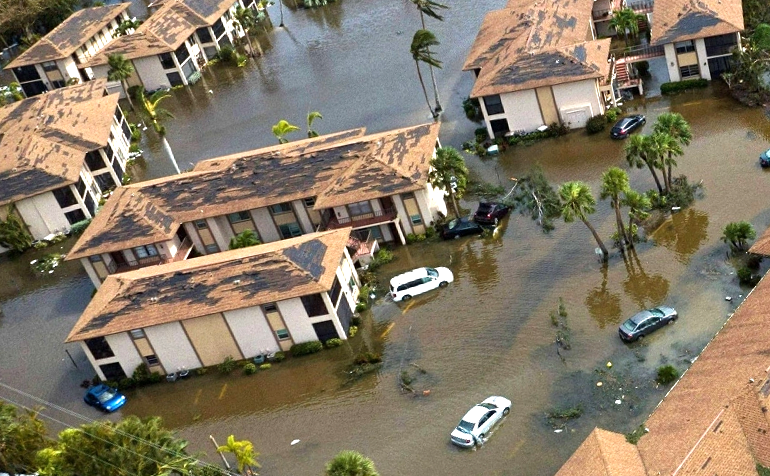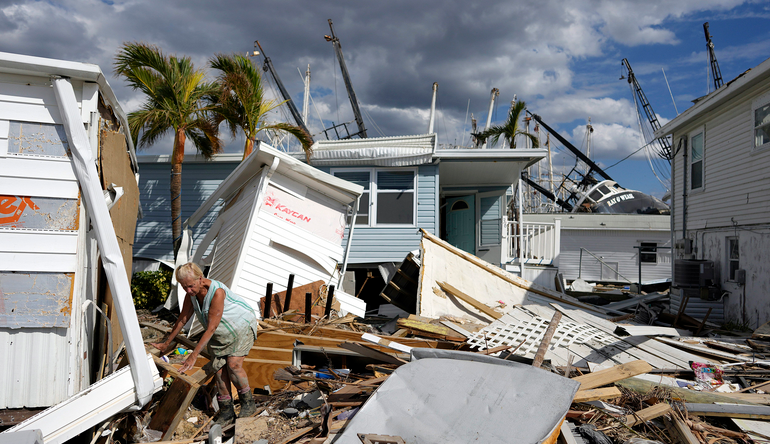Seismic shifts in the macroeconomic environment – combined with geopolitical uncertainty and heavy natural catastrophe losses – led to a severe tightening of capacity and a highly challenging period for reinsurance renewals on 2023, according to Howden.
- Reinsurance market, one of the hardest markets for the last 30 years – certainly since 9/11
- Hardest renewal market in years as industry approaches 1 April
- A shortage of capacity in property catastrophe markets has resulted in the hardest market since 9/11
- A knock-on effect far beyond property and casualty providers
The convergence of geopolitical and macroeconomic shocks – war in Europe, fractured energy markets, 40-year high inflation, interest rate hikes, depleted capital – as well as the second most expensive natural disaster ever, has introduced significant volatility into the market (see Reinsurance Rates for Property Catastrophe Forecast)..

Pricing cycles in the commercial insurance and reinsurance sectors are now converging, marked by price increase moderation overall for the former, albeit with strengthening in challenged areas, and rapid acceleration (dislocation even) for the latter (see How Global Reinsurance Market Endured a 2023 Renewals?).
High inflation, which has caused central banks to raise interest rates, has been exacerbated by war in Ukraine and the knock-on effect on energy markets.
Hurricane Ian – which tore into the Caribbean and south-western USA in September 2022 – was just the latest in a significant run of natural catastrophe losses that have hit the market since 2017.
During that period there have been unprecedented levels of insured losses – many caused by secondary perils, such as wildfires, floods and droughts, which in turn are being impacted by climate change (see TOP 50 Largest Global Reinsurance Groups in the World).
The effects of Covid-19 are still being felt around the globe, not least in the (re)insurance markets that took a large share of the $50 billion in life and non-life losses stemming from the pandemic.
These factors tipped the reinsurance sector into significant volatility, resulting in one of the hardest reinsurance markets in living memory.
This was intensified by a decline of $355 billion in reinsurer capital in 2022, the first such fall since 2008.

Global reinsurance market has faced a very late, complex and in many cases frustrating renewal 1/1 2023. As anticipated before negotiations commenced, the two areas of most constraint were peak-zone US property catastrophe capacity and coverage for strikes, riots & civil commotion and war. As renewals approached the end of the year, the market became more bifurcated.
The consequent environment at renewals led to the most acute, cyclical price increases since the 2001-2006 period, if not before.
Carrier costs of capital underpinned higher rates-on-line (ROL), lower capacity levels, and tighter terms and conditions.
This has had a knock-on effect far beyond property and casualty providers because of the systemic impact on the reinsurance market as a whole.
Phil Nastri, partner at KPMG
The result of this turbulent environment is significantly increased rates across the board and some longstanding reinsurance programmes undergoing major reconstruction.
Those feeling the greatest impact are some of the smaller players who have less economic power to leverage in a difficult market, especially those underwriting property risks exposed to extreme weather conditions (see The Role of Insurance & Reinsurance in Minimizing Risks of the War`s Impacts).
With much less new capital coming into the market, property is bearing the brunt, particularly in North America.
This scenario was made harder for reinsurance companies as there were numerous issues on the asset side, which led to a year of poor earnings on the investment side.

Whilst in a changing market frustration is easily felt by all participants, several buyers perceived that their efforts to approach markets early with more detailed renewal presentations addressing reinsurers’ concerns over inflation and coverage were not recognized (see How Global Reinsurance Market Endured a 2023 Renewals?).
Times of significant market change are always challenging to navigate but we have seen a significant difference in the ways that individual reinsurers have reacted despite a widespread stated ambition to grow premium volumes in what is being viewed as the best treaty underwriting terms and conditions for a generation.
Only a limited number of reinsurers were prepared to offer quotes in a timely fashion leading to difficulties for clients and their brokers to find market clearing prices, terms, and conditions.
Political violence renewals have been especially demanding in terms of finding a market consensus. The differences in opinion between buyers and sellers were aggravated by the perception that there was time to reach agreement on the complex issue of the Ukraine/ Russia conflict well in advance of renewals (see Reinsurance Rates for Property Catastrophe Forecast 2023).
This final point perhaps best illustrates the challenge facing many clients. The primary liability market has seen improved trading conditions for insurers for the last four to five years and did not require a hardening reinsurance market to provoke its own ‘turn’.

Reinsurers that invested heavily in bonds and fixed-income securities saw a decline in earnings due to higher interest rates.
In addition, inflation created a high degree of uncertainty around loss cost going into these renewals which, combined with high interest rates, had a significant impact on the January reinsurance renewals.
High inflation going into the renewals increased demand – a lot of buyers were looking to buy at least 10% more limit just to cater for inflation.
Mike Van Slooten, head of business intelligence for Aon’s Reinsurance Solutions
The values to their insured portfolios increased because of inflation and they wanted to buy the additional limit to cover that. At the end of the day, however, many of them didn’t end up doing that because the pricing was too high.
As far as the reinsurers were concerned, they were making some very significant demands, in terms of what is the impact of inflation on your underlying portfolio.

It was a hard reinsurance market, one of the hardest markets for the last 30 years – certainly since 9/11.
Despite this, many London market reinsurers were able to maintain their market share during the January renewals – with carriers such as Beazley and Hiscox showing increased appetite.
Increases in rates in property reinsurance is an attractive opportunity for those London market participants that write reinsurance business and we have seen a number of London market insurers deploying additional capacity to write more reinsurance business – some insurers raised capital to take advantage of this opportunity.
Katia Ishchenko, director in the insurance team at Fitch Ratings.
For 2023, the property treaty market has hardened considerably, and now many clients face the challenge of increased reinsurance costs, increased retentions and more restricted coverage knowing that the original market pricing environment will take time to move upwards, particularly for personal lines business and the US admitted market.
For property Risk renewals there has been less regional differentiation and a more uniform approach adopted by reinsurers seeking to improve their returns on a globally under performing class of business.
Capacity has been restricted with reinsurers wanting to see the impact of original underwriting changes some buyers were starting to introduce in their portfolios before committing additional capacity.
There are, however, reasons for cautious optimism. The improvement in pricing and conditions, most notably in property treaty business, has led to some new capacity coming into the market from a combination of modest capital raising by existing reinsurers, a reallocation of internal capital from some reinsurers, and notably some primary carriers with existing reinsurance operations.
………………..
Reviewed & Fact checked by 








